Art Fairs
An Old Master Drawing Offered for Just $250 Last Year at a Massachusetts Auction House Will Go on Sale for $1.4 Million at TEFAF Maastricht
The original drawing for one of the Netherland's most beloved engravings had been lost since 1888.
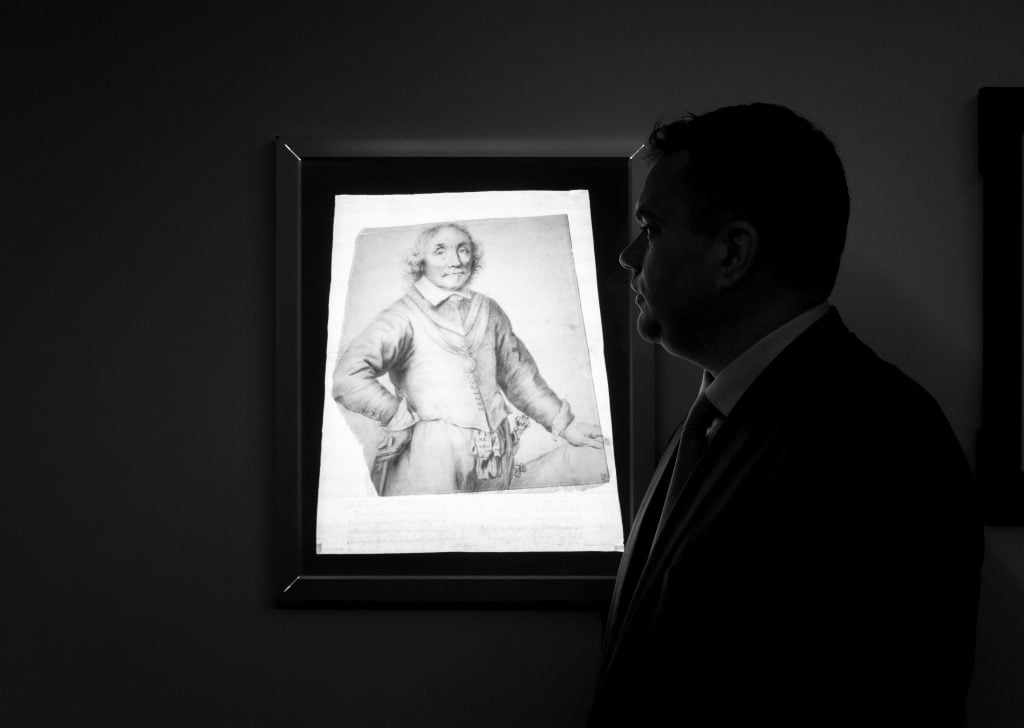
The original drawing for one of the Netherland's most beloved engravings had been lost since 1888.

Sarah Cascone

A long-lost piece of Dutch art history is returning to the Netherlands. Next week, New York’s Christopher Bishop Fine Art is offering a rediscovered drawing by Jan Lievens for €1.35 million ($1.4 million) at TEFAF Maastricht.
The artwork surfaced in October 2020 at Marion Antique Auctions, a small Massachusetts outfit, where it was billed as a drawing of “an unidentified gentleman, initialed I.L., and dated 1652.” The estimate was just $200 to $300, but it immediately caught Christopher Bishop’s attention.
The drawing came to Marion by way of a Massachusetts family who was consigning a collection of hand-painted porcelain. When auction house co-owner Frank McNamee visited their home, he was also shown a selection of framed artworks, and was drawn to the Lievens.
“There wasn’t enough time to really spend on researching it, but I made sure it got featured in all the auction advertisements,” he told the New York Times.
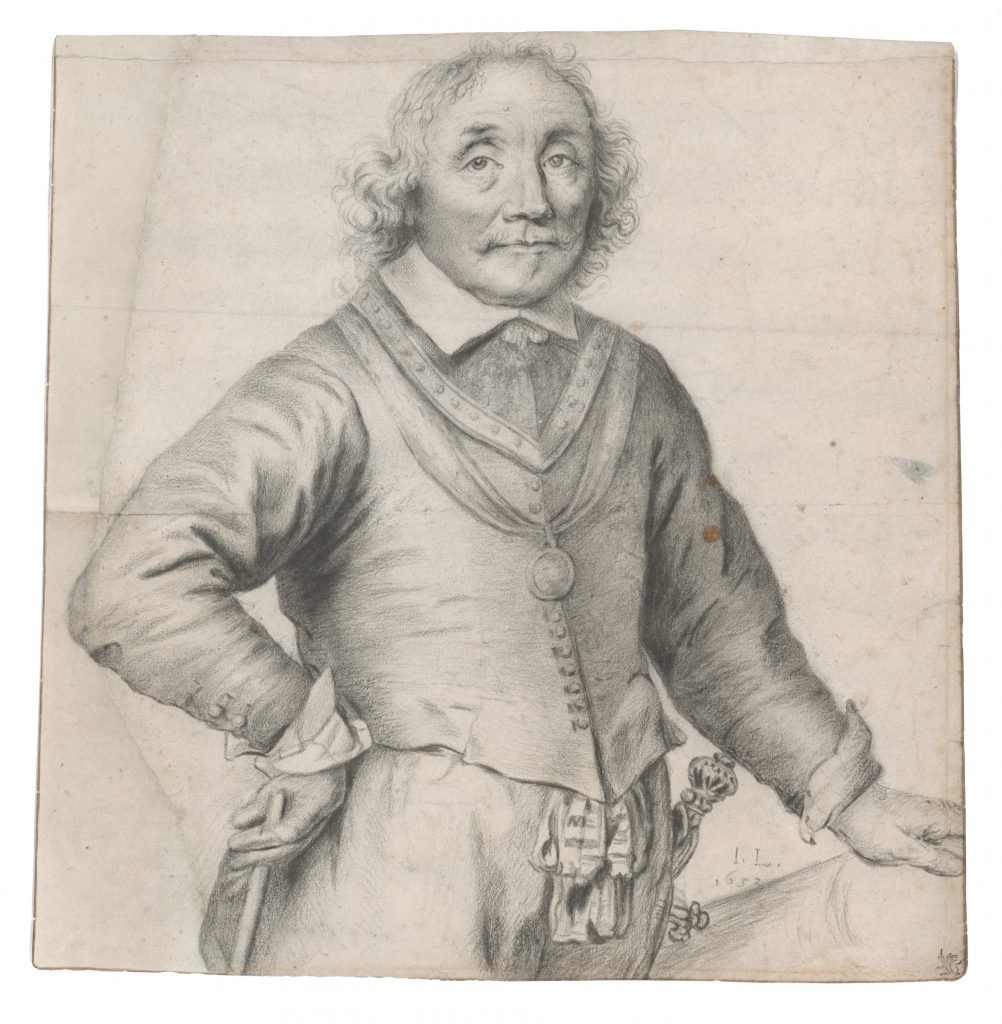
Jan Lievens, Portrait of Admiral Maarten Harpertszoon Tromp (1597–1653) (ca. 1652/53). Courtesy of Christopher Bishop Fine Art, New York.
What the auction house hadn’t spotted was the portrait’s resemblance to a well-known Lievens print of Maerten Tromp, a Dutch naval commander who became a national hero for his role in the First Anglo-Dutch War, and his death at the hands of an English sharpshooter in 1653.
The year before Tromp died, he sat for Lievens in Amsterdam. The Dutch Old Master used his drawing of Tromp as the basis for a widely reproduced engraving and, later, for two oil paintings, one of which belongs to the Rijksmuseum in Amsterdam. Lievens also made a second drawing based on the print, which is in the British Museum collection in London.
There was even a set of widely distributed postage stamps in 1943, released as a bit of nationalistic propaganda at the height of World War II.
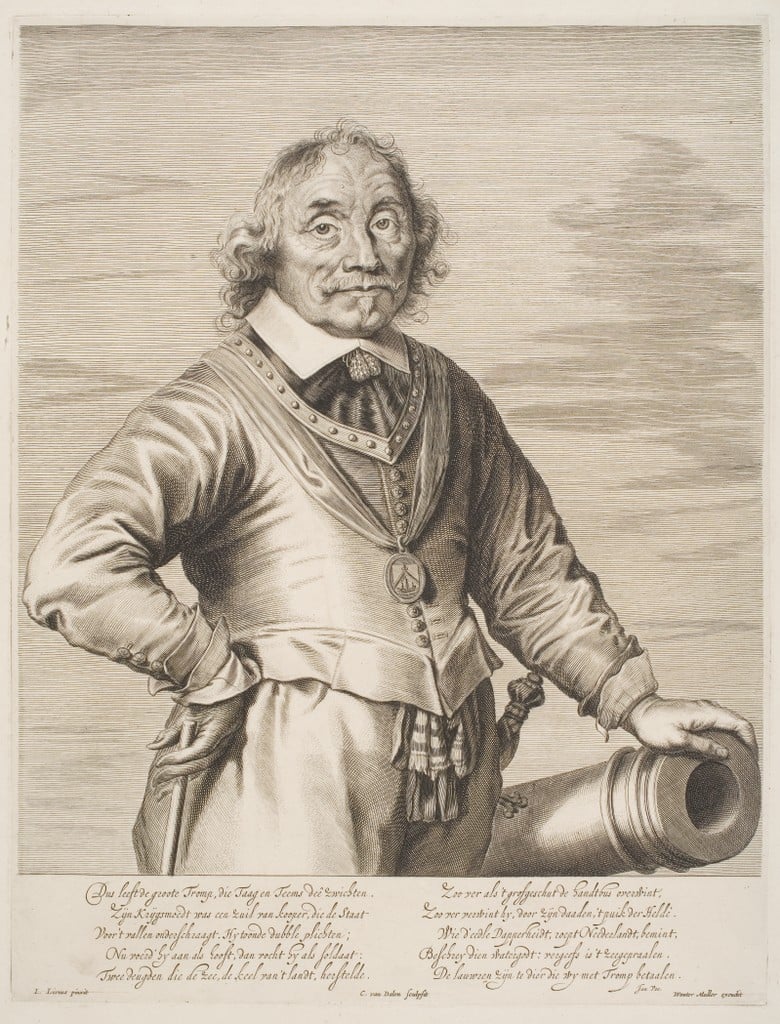
Cornelis van Dalen II after Jan Lievens, Portrait of Admiral Maarten Harpertszoon Tromp (1597–1653), ca. 1652/53. Courtesy of Christopher Bishop Fine Art, New York.
But the original drawing had disappeared, last seen at auction in Frankfurt in 1888.
“This was a missing drawing, a drawing we knew was out there. We just didn’t know where,” Bishop told Artnet News in an email.
The initials on the Marion Antiques drawing were the first clue that the auction house might have something special. In the 17th century, the letter J was often indistinguishable from an I, which could mean the monogram was actually “J.L.”
Bishop wasn’t the only one who suspected he had found a sleeper: More than 15 people called Marion to ask about it ahead of the sale, and five people bid by phone during the auction, quickly driving up the price to an astonishing $514,800.
Midway through the bidding war, the auctioneer paused to acknowledge that “it looks like we underestimated this one.”
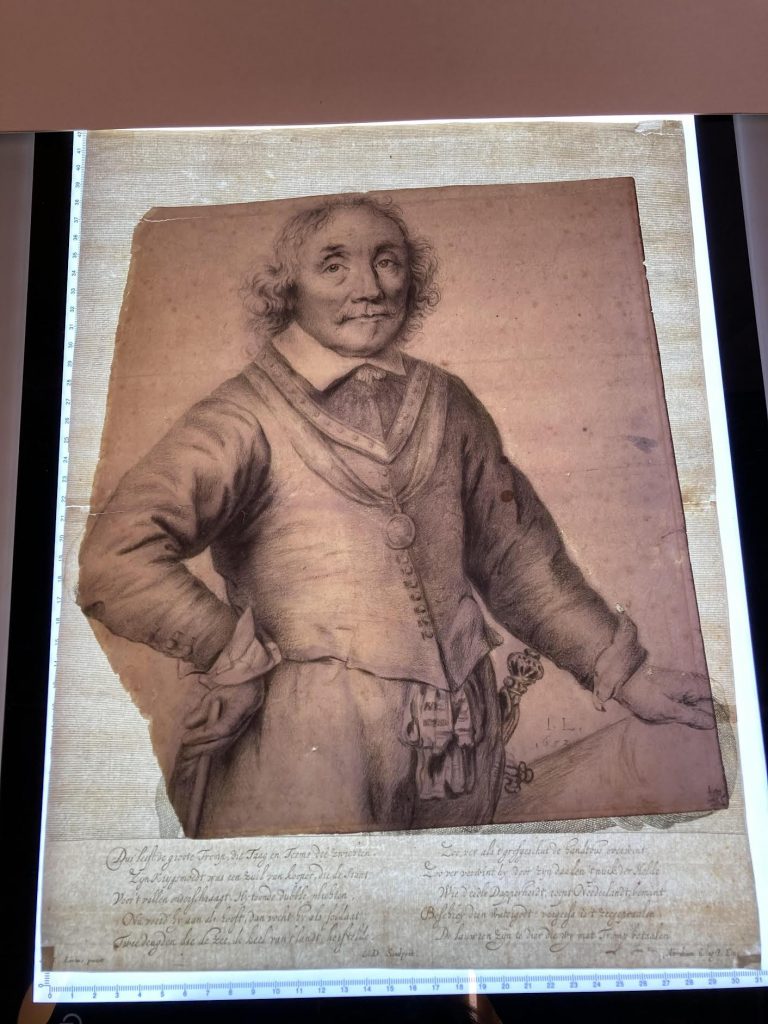
Jan Lievens’s Portrait of Admiral Maarten Harpertszoon Tromp (1597–1653) (ca. 1652/53) overlaid with the famous print based on the drawing. Photo courtesy of Christopher Bishop Fine Art, New York.
As the price skyrocketed, Bishop knew he was taking a big financial risk. “At this price point you have to be right 100 percent of the time,” he admitted. “The logic of this drawing was inescapable, however.… All the pieces fit.”
After purchasing the artwork, Bishop was able to remove it from the frame for closer examination. When overlaid on top of the print, the drawing was an exact match—and there were even pinpricks in the paper used by the printmaker to register it to the engraving plate.
“The drawing fits the print like a glove,” Bishop said.
Holding the paper up to the light offered further proof, revealing an intricate foolscap watermark with a seven-pointed collar.
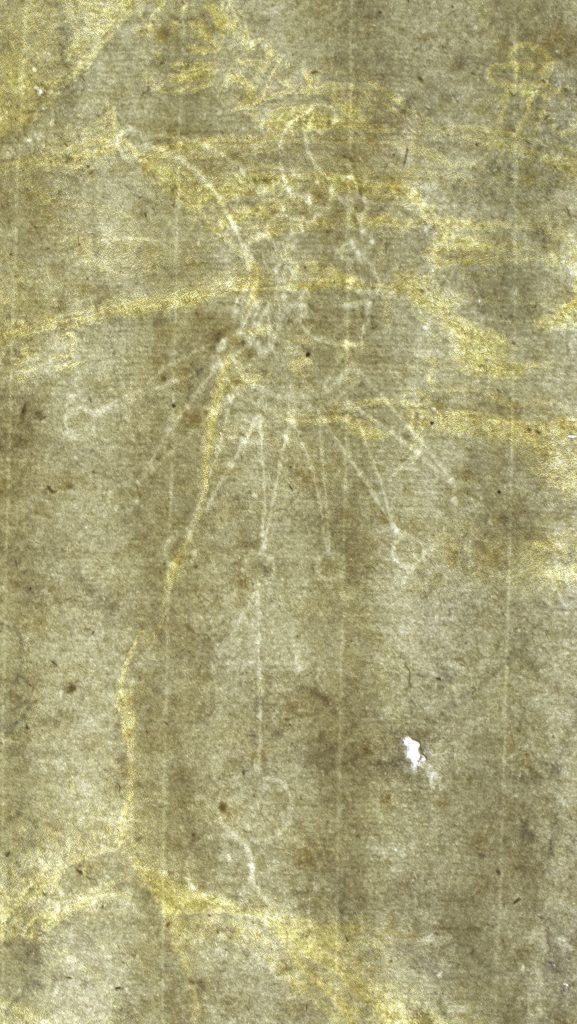
The paper maker’s watermark on Jan Lievens’s Portrait of Admiral Maarten Harpertszoon Tromp (1597–1653) (ca. 1652/53). Photo courtesy of Christopher Bishop Fine Art, New York.
This showed that the paper was made by a company known to have been used by Lievens’s contemporary and former studio mate Rembrandt van Rijn. The paper is known to have only been in production for a 15-year period, and it would make sense for the two great artists to have used the same supplier.
“Watermarks don’t lie. They are unique to a time and place, like fingerprints,” Bishop said.
The final evidence was the mark of William Mayor, one of the drawings known owners, from when he had his collection catalogued in London in 1875.
The drawing has since been examined by Gregory Rubinstein, head of the Old Masters drawings department at Sotheby’s London, who confirmed its authenticity as a work by Lievens.
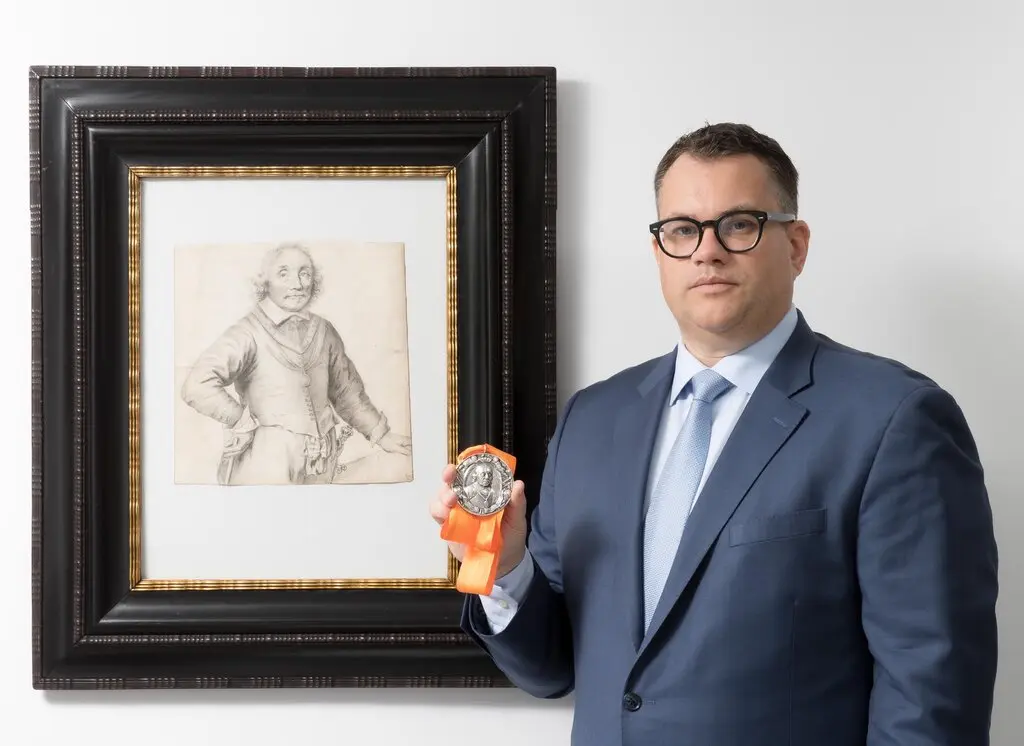
Christopher Bishop with Jan Lievens’s Portrait of Admiral Maarten Harpertszoon Tromp (1597–1653), ca. 1652/53, and a 17th-century silver commemorative medal depicting the admiral. Photo courtesy of Christopher Bishop Fine Art, New York.
“The rediscovery of Jan Lievens’s original drawing is an event of the greatest importance,” he said in a statement. “It’s exciting finally to know what Lievens’s grand, large-format depiction of this national hero actually looked like.”
The Massachusetts family had owned the drawing for generations, likely purchasing it during business travels to Europe in the early 20th century. Now, over 100 years later, the original version of Tromp’s famed portrait is finally headed home.
“In many ways it belongs to the Dutch nation,” Bishop said. “The tenacity, resolve, and resilience that Tromp demonstrated and Lievens captured is what makes Holland a great nation. I would love to see a Dutch institution acquire it.”
TEFAF will be on view at MECC Maastricht, Forum 100, 6229 GV Maastricht, the Netherlands, June 24–30, 2022.